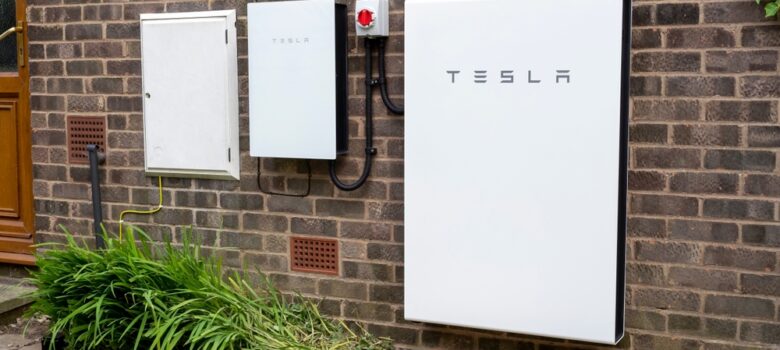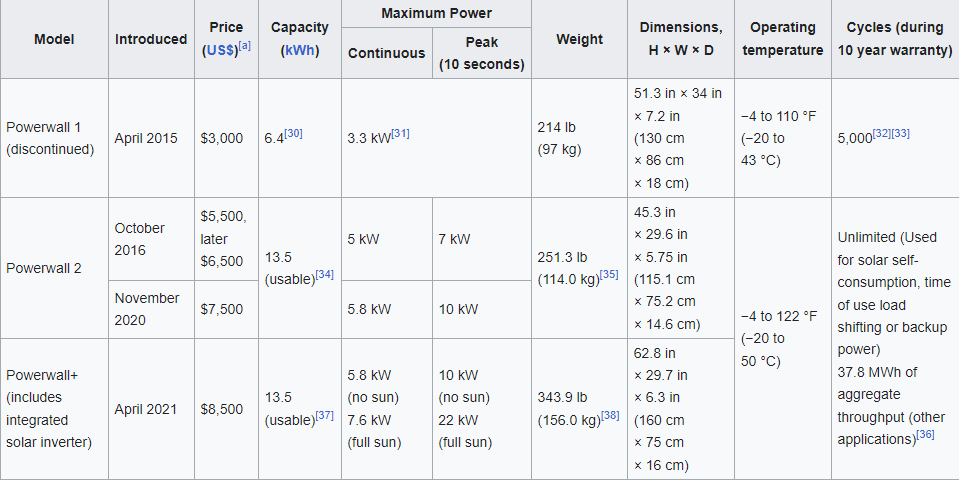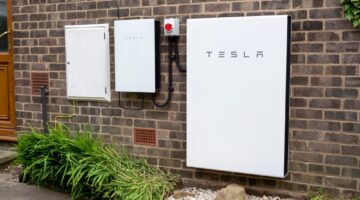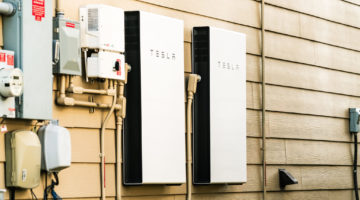
The Tesla Powerwall is a rechargeable lithium-ion battery designed to store energy for home use. It is a product of Tesla Energy, a branch of Tesla Inc. that focuses on manufacturing solar energy products. Our friends at EWI Pro have a case study which is garnering regional and national awards; the project in question utilises Tesla Powerwall 2 batteries.
Features of the Tesla Powerwall
-
Energy Storage: The Powerwall is a rechargeable battery system that stores energy from solar panels or the grid. It stores surplus solar energy not used at the time it is generated and provides that energy when needed later on, such as during the night or during a power outage.
-
Compact and Scalable: The Powerwall is compact and entirely automated. It’s a relatively small, rectangular unit that mounts to the wall, typically in a garage or outside of the home. Multiple Powerwalls can be connected to increase the amount of power available. Up to 10 Powerwalls can be combined for homes with greater energy needs.
-
Real-Time Energy Usage: The Tesla app gives you an overview of your home’s energy production and consumption in real time. It shows solar production, Powerwall charging and discharging, and home energy use.
-
Touch-safe: The Powerwall has a touch-safe design, which means there are no exposed wires or hot vents.
-
Water-Resistant and Dustproof: It is water-resistant and dustproof, allowing for installation indoors or outdoors.
-
Storm Watch: Powerwall can detect incoming storms using internet-connected data and will automatically store energy in preparation for power outages.
-
Self-Powered Mode and Backup-only Mode: The self-powered mode allows you to use the Powerwall to power your home independently from the grid. On the other hand, the Backup-only mode stores energy until the Powerwall detects a power outage, at which point it starts supplying power.
-
Time-Based Control: Time-Based control lets you use the Powerwall’s stored power when energy costs are high and recharge when costs are low (this requires a compatible electricity tariff).
-
Integration: Powerwall can be integrated with Tesla’s solar panels and Solar Roof for an all-in-one solar and storage system.
-
Temperature Control: Powerwall uses an internal liquid cooling and heating system to keep its internal temperature stable, which can improve battery performance and lifespan.
Should you get a Tesla Powerwall?
Should you get one? The answer to this depends on a few factors:
-
Availability of Solar Power: If you live in an area that gets a lot of sunlight throughout the year, a Powerwall, in combination with solar panels, could save you a significant amount on your energy bills.
-
Power Outages: If you live in an area that experiences frequent power outages, the Powerwall’s backup power capabilities could be a valuable asset.
-
Energy Prices: In some areas, electricity prices can vary throughout the day. If you live in such an area, you could save money by charging the Powerwall during off-peak hours and using the stored power during peak hours.
-
Cost: A Powerwall is a significant investment. The cost of a Powerwall (not including installation or supporting hardware) is upwards of £15,000. You would need to calculate the potential energy savings over time to see if it would be a cost-effective choice for you.
-
Environment: If reducing your carbon footprint is a priority, using a Powerwall in combination with solar panels can help achieve that goal by decreasing your reliance on grid energy, which often comes from fossil fuels.
-
Local Regulations and Incentives: Some areas have laws, regulations, or financial incentives related to renewable energy installation and storage. These can influence the cost-effectiveness of a Powerwall.
Technology and costs
The Tesla Powerwall, employed at an elephant sanctuary in Kenya, is designed for daily cycling, such as load shifting. The company utilises its proprietary technology for cell packaging and cooling with a liquid coolant. Musk has pledged not to pursue patent infringement lawsuits against anyone utilising Tesla’s Powerwall technology in good faith, mirroring his earlier promise with Tesla cars.
The first Powerwall utilises a nickel-manganese-cobalt composition and comes with a warranty that covers up to 5,000 cycles. With a round-trip efficiency of 92.5% when charged or discharged by a 400-450 V system at 2 kW and a temperature of 25°C (77°F), the Powerwall’s performance is top-tier when new. However, variations in the product’s age, temperature above or below 25°C (77°F), and charging or discharging rates above 2 kW may reduce this efficiency, thereby affecting overall performance.
The original Powerwall includes a DC-to-DC converter that sits between a home’s existing solar panels and the current DC-to-AC inverter. Should the current inverter not be compatible with storage, a suitable one must be procured.
The second iteration, Powerwall 2, features a DC-to-AC inverter designed by Tesla. The production of the 2170 cell type for the Powerwall 2 commenced at Giga Nevada 1 in January 2017.
In 2016, the National Fire Protection Association carried out two worst-case scenario tests, igniting Powerpacks to initiate thermal runaway. The design successfully contained the damage within the Powerwall structures.
An article published in Forbes magazine in May 2015 calculated that integrating a Tesla Powerwall 1 model with solar panels in a household would render electricity costs at about 30 pence/kWh if the home remained connected to the grid. This scenario painted the Powerwall as a luxurious, eco-friendly accessory for wealthy individuals.
Both Bloomberg and Catalytic Engineering concur that the Tesla system proves most beneficial in areas with high electricity costs, such as Hawaii and other remote islands that generate electricity using imported fuel.
Areas with time-of-use (TOU) pricing may also see potential savings. For instance, Northern California’s Pacific Gas and Electric Company 2021 charged rates as low as 12 pence/kWh during off-peak hours (12a–3p) and as high as 52 pence/kWh during peak hours (4p–9p). When configured for cost savings, the Powerwall can enable a home to go off-grid during peak hours, thus avoiding high-cost power usage.
According to the Swiss bank UBS, the Powerwall makes economic sense in countries like Australia and Germany, where electricity is exceptionally costly but solar panels are widely distributed.
As of October 2019, the recommended installation of two Tesla Powerwall 2 units costs around £11,000 (plus £1,900 to £3,400 for installation) in the US, excluding the cost of solar panels.













No Comments yet! Be the first one.